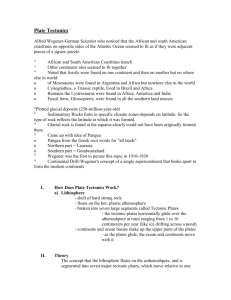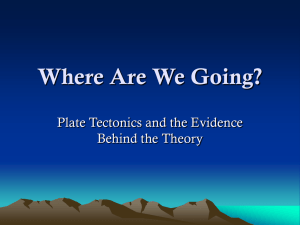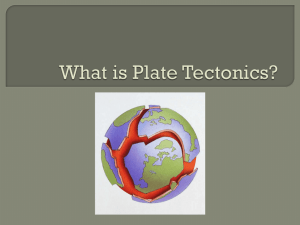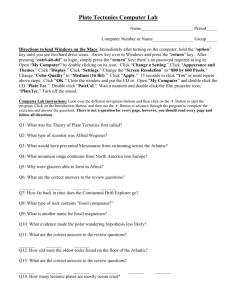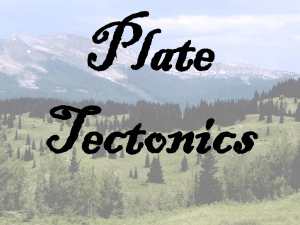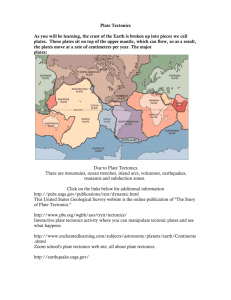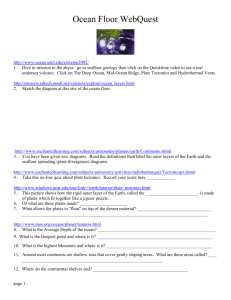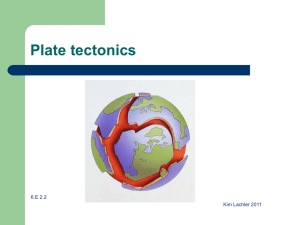Article - The Success of Plate Tectonics
advertisement
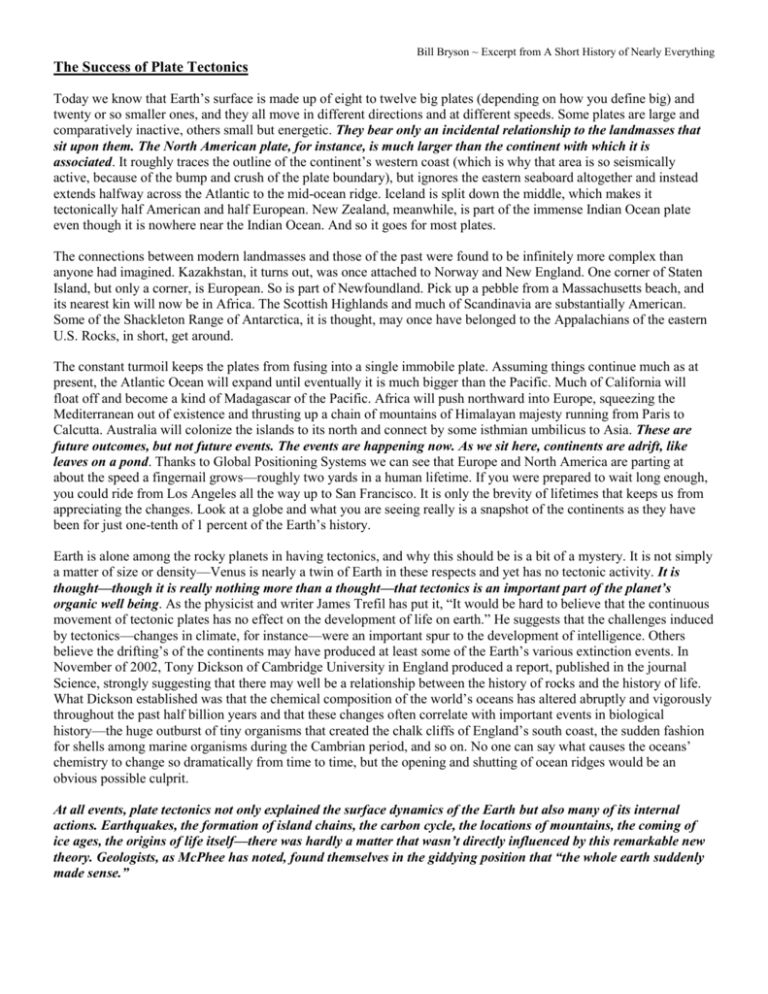
Bill Bryson ~ Excerpt from A Short History of Nearly Everything The Success of Plate Tectonics Today we know that Earth’s surface is made up of eight to twelve big plates (depending on how you define big) and twenty or so smaller ones, and they all move in different directions and at different speeds. Some plates are large and comparatively inactive, others small but energetic. They bear only an incidental relationship to the landmasses that sit upon them. The North American plate, for instance, is much larger than the continent with which it is associated. It roughly traces the outline of the continent’s western coast (which is why that area is so seismically active, because of the bump and crush of the plate boundary), but ignores the eastern seaboard altogether and instead extends halfway across the Atlantic to the mid-ocean ridge. Iceland is split down the middle, which makes it tectonically half American and half European. New Zealand, meanwhile, is part of the immense Indian Ocean plate even though it is nowhere near the Indian Ocean. And so it goes for most plates. The connections between modern landmasses and those of the past were found to be infinitely more complex than anyone had imagined. Kazakhstan, it turns out, was once attached to Norway and New England. One corner of Staten Island, but only a corner, is European. So is part of Newfoundland. Pick up a pebble from a Massachusetts beach, and its nearest kin will now be in Africa. The Scottish Highlands and much of Scandinavia are substantially American. Some of the Shackleton Range of Antarctica, it is thought, may once have belonged to the Appalachians of the eastern U.S. Rocks, in short, get around. The constant turmoil keeps the plates from fusing into a single immobile plate. Assuming things continue much as at present, the Atlantic Ocean will expand until eventually it is much bigger than the Pacific. Much of California will float off and become a kind of Madagascar of the Pacific. Africa will push northward into Europe, squeezing the Mediterranean out of existence and thrusting up a chain of mountains of Himalayan majesty running from Paris to Calcutta. Australia will colonize the islands to its north and connect by some isthmian umbilicus to Asia. These are future outcomes, but not future events. The events are happening now. As we sit here, continents are adrift, like leaves on a pond. Thanks to Global Positioning Systems we can see that Europe and North America are parting at about the speed a fingernail grows—roughly two yards in a human lifetime. If you were prepared to wait long enough, you could ride from Los Angeles all the way up to San Francisco. It is only the brevity of lifetimes that keeps us from appreciating the changes. Look at a globe and what you are seeing really is a snapshot of the continents as they have been for just one-tenth of 1 percent of the Earth’s history. Earth is alone among the rocky planets in having tectonics, and why this should be is a bit of a mystery. It is not simply a matter of size or density—Venus is nearly a twin of Earth in these respects and yet has no tectonic activity. It is thought—though it is really nothing more than a thought—that tectonics is an important part of the planet’s organic well being. As the physicist and writer James Trefil has put it, “It would be hard to believe that the continuous movement of tectonic plates has no effect on the development of life on earth.” He suggests that the challenges induced by tectonics—changes in climate, for instance—were an important spur to the development of intelligence. Others believe the drifting’s of the continents may have produced at least some of the Earth’s various extinction events. In November of 2002, Tony Dickson of Cambridge University in England produced a report, published in the journal Science, strongly suggesting that there may well be a relationship between the history of rocks and the history of life. What Dickson established was that the chemical composition of the world’s oceans has altered abruptly and vigorously throughout the past half billion years and that these changes often correlate with important events in biological history—the huge outburst of tiny organisms that created the chalk cliffs of England’s south coast, the sudden fashion for shells among marine organisms during the Cambrian period, and so on. No one can say what causes the oceans’ chemistry to change so dramatically from time to time, but the opening and shutting of ocean ridges would be an obvious possible culprit. At all events, plate tectonics not only explained the surface dynamics of the Earth but also many of its internal actions. Earthquakes, the formation of island chains, the carbon cycle, the locations of mountains, the coming of ice ages, the origins of life itself—there was hardly a matter that wasn’t directly influenced by this remarkable new theory. Geologists, as McPhee has noted, found themselves in the giddying position that “the whole earth suddenly made sense.”
